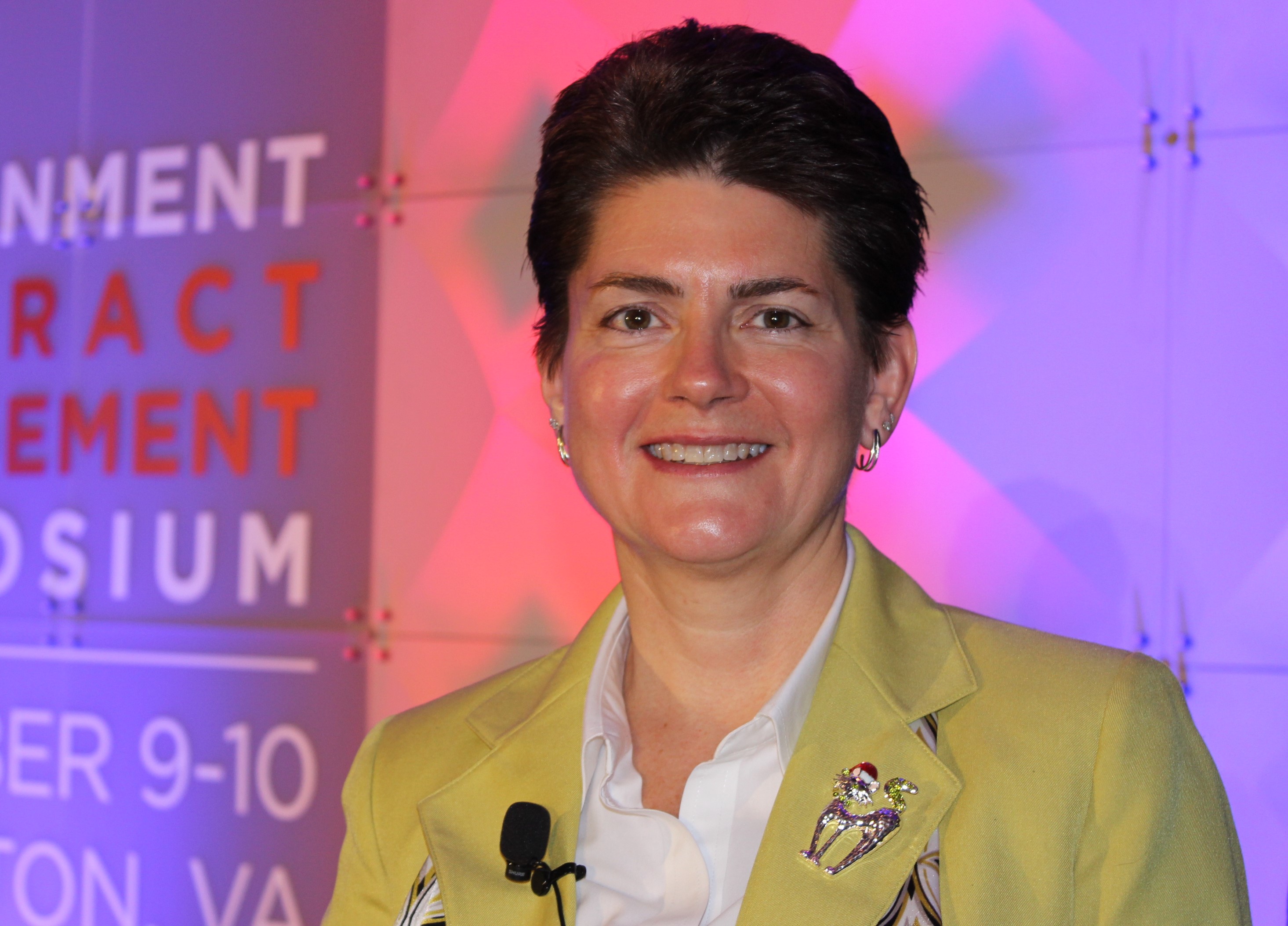Federal CIO Martorana going on a hiring spree in preparation for busy 2022
The list of executives leaving OMB’s Office of the Federal CIO is growing, but don’t take that as a bad sign.
Maria Roat’s decision to retire at the end of March shouldn’t be seen as yet another member of the Office of Management and Budget’s Office of the Federal Chief Information Officer heading out the door. And there have been quite a few over the past year.
Rather, Roat, the deputy federal CIO since May 2020, and many others who have left over the past year are part of a normal churn that comes from working in one of the hardest, but most rewarding jobs in government.
Turnover in not just the Federal CIO’s Office but across OMB tends to happen in spurts. It’s well known that working crazy hours, pushing the IT modernization or cybersecurity boulder up the hill, getting closer to the long-term objective, and constantly putting out fires takes its toll on staff members and political appointees alike after a few years.
But as many former OMB employees have told me over the years, it’s the hardest job they will ever love.
“Working in the Office of the Federal CIO is an incredible way to have an outsized impact on federal agency missions. Analysts in OMB often sit at the nexus of issue areas and response efforts, partnering across organizations and delivery teams to optimize the roadmap for achieving an administration’s policy objectives,” said one former OMB official, who requested anonymity. “With this impact also comes the reality that the jobs at OMB are tough, both in the complexity of work but also in the impact to personal well-being. Most working in technology are used to the ebb and flow of a 24/7 schedule but what may not be familiar is operating under constant pressure that comes with balancing operational, fiscal and political risks. Analysts often choose to leave after a couple of years, many of whom experience a great deal of burn out.”
At the same time, the turnover can be a good thing as new and diverse detailees or permanent employees bring in not just new ideas, but a view from the agency trenches.
Hiring underway at OMB
To a large extent that is what is happening now.
Federal CIO Clare Martorana, who came into the job last March, is restocking her team with experienced agency executives and is looking for new talent to fill out key roles.

The hiring of Drew Myklegard as the new associate deputy federal CIO, a new position in the office, from the Department of Veterans Affairs, and Eileen Vidrine, the chief data officer at the Air Force for the last three years, as the strategic advisor for data to Federal CIO, are two of the most recent examples of the key changes coming to the office.
“As we kick off a new year, we’re excited about our ambitious agenda in the Office of the Federal CIO. Secure technology is at the heart of the President’s Management Agenda, the executive orders on cybersecurity and customer experience and digital transformation and data initiatives across the federal government,” said Martorana in a statement to Federal News Network. “Our extraordinary team will be front and center in executing on this work, and we’re growing with new hires, as well as exceptional leaders on detail who have delivered innovative technology solutions at the agency level. We’re excited about providing exceptional support to our agency partners, scaling innovation across government, and delivering a secure customer experience for the American public.”
Myklegard comes to OMB from VA where he worked for the past eight years, including as the executive director of product engineering. He is on a detail to OMB from VA. Vidrine comes to OMB after becoming the Air Force’s CDO in June 2018. She worked for the White House as part of its Leadership Development Program.
“Eileen Vidrine and Drew Myklegard bring a breadth and depth of knowledge and extraordinary talent to our team. They’re proven leaders in deploying modern technology that’s secure by design and delivers more seamless processes for the federal workforce so they can better serve the American people. And they will help OFCIO as we pursue an ambitious agenda that includes working on the President’s Management Agenda, the Executive Orders on Cybersecurity and Customer Experience, and driving IT modernization and data initiatives across the federal government,” said Martorana in a statement. “We’re excited by their arrival and looking forward to continuing our momentum together.”
Other key positions opening up
Along with Vidrine and Myklegard, OMB is adding as many as others in the coming months, including finding a replacement from Steve McAndrews, the director of federal cybersecurity. McAndrews is leaving to become the deputy CIO at the National Nuclear Security Administration, under another former OFCIO executive James Wolff. Wolff left OMB in July to become NNSA’s CIO.
McAndrews, Wolff and Doc McConnell, the former senior advisor for cybersecurity at OMB and who left to work at the Cybersecurity Infrastructure Security Agency in October, are among the seven or so people who have left OMB over the past year. Jordan Burris, the OFCIO chief of staff, also left the office last fall to join the public sector.
The Office of Federal CIO had more than 40 staff members in late 2020 and saw that number drop to under 35 by summer of 2021. It’s particularly difficult to keep folks in the cybersecurity office as these experts are in high demand across industry and other agencies.
It’s well known OMB is constantly understaffed. To replace these folks and fill other open positions, OFCIO put out job announcements late in 2021 and recently closed another one to help fill gaps in areas like cloud, data center, artificial intelligence, identity and access management, data, internet of things, workforce and, of course, cybersecurity.
An OMB official told Federal News Network that by continually recruiting and rotating staff into government, OFCIO can bring fresh perspectives, skillsets and experiences to its work.
“When we cast a wide net, we also ensure we better represent the American people and avoid introducing bias into the products and services we deliver,” the official said. “Since IT underpins these initiatives, the next round of technologists joining us will be directly involved in designing, leading, and delivering technology transformation across government.”
Government sources also confirmed OMB hired Kristine Lam, who is on detail from the General Services Administration and doing legislative affairs work, Andy Lewandowski, who is focused on improving customer experience and came over from the U.S. Digital Service in July, and Cassie Winters will join OFCIO by the end of January from the House Oversight and Reform Committee staff where she focused on technology policy.
The former OMB official applauded Martorana’s effort to not only bring in new people, but a more diverse set of executives.
“While a mix of new talent coming onboard is a great thing for both diversity of thought and rejuvenation of existing team members, it’s important to keep an eye on the mix of detailed team members vs. permanent hires,” the official said. “Analysts at OMB often serve as institutional memory between administrations and changes in leadership. If the mix of permanent staff declines too significantly, it could create risk for the sustainability of the organization.”
A good reminder not only for OMB, but every CXO office across the government.
Copyright © 2025 Federal News Network. All rights reserved. This website is not intended for users located within the European Economic Area.
Jason Miller is executive editor of Federal News Network and directs news coverage on the people, policy and programs of the federal government.
Follow @jmillerWFED






